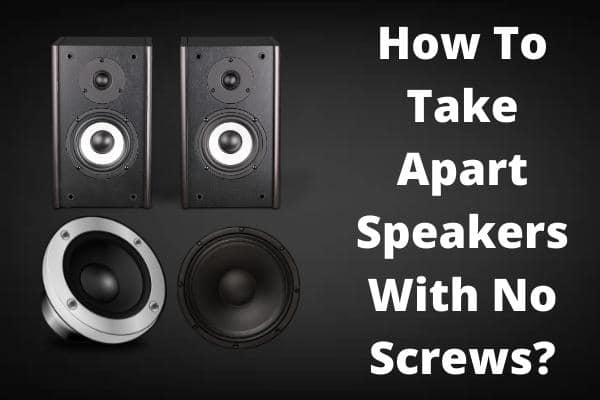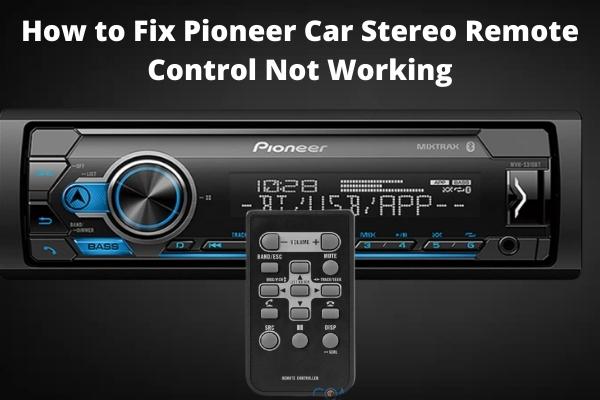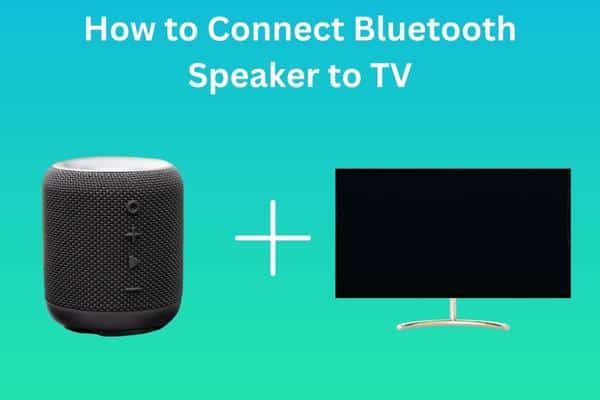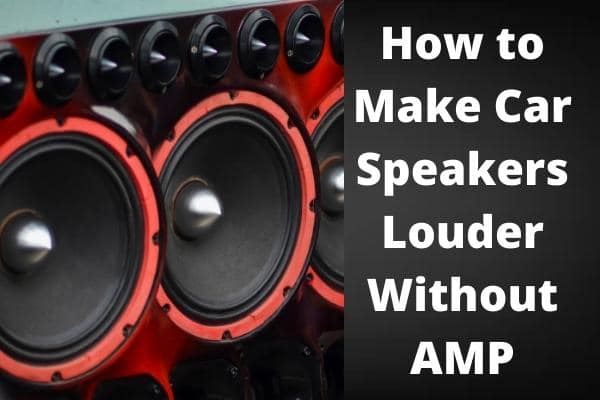
We’ve all experienced the agony of having perfectly nice, high-quality audio speakers break or malfunction. Have you ever used speakers with internal screws? Do you know How To Take Apart Speakers With No Screws?
Especially frequent are those sealed speakers that can’t open from the front grille or the back panel, which are common. When a speaker utilizes it for any time, it will ultimately wear down and lose its ability to provide high-quality sound.
It happens when the speaker’s cone wears out or tears due to repeated use. Only after disassembling the speaker are these and any other speaker elements changeable. Knowing how to disassemble a speaker serves various functions, including repairs, inspections, and education.
Here, you’ll learn How To Take Apart Speakers With No Screws, what can go wrong with it, and what tools and parts you’ll need to fix it. Removing a speaker without using screws provides simple, easy-to-follow step-by-step instructions. On the other hand, speakers are a piece of cake to fix, thanks to their straightforward construction.
How is a Speaker Organized?
In a home stereo or a complete home entertainment system, audio speakers magnify the sound of another component. A typical speaker consists of several interrelated elements.
Most speakers have a 6 to 15inch-diameter cone woofer, a dome or cone mid-range driver, and a tiny tweeter for high frequencies in a standard enclosure. An audio signal is fed into a terminal block at its rear end using speaker cords.
Once installed within the vehicle, each driver receives appropriate frequency information from the crossover network. Cones move the air so that your ears can detect sound due to this mechanical movement of the cone.
What Can Affect a Speaker?

Speakers are the most susceptible to damage when they are misused. The enclosure can be damaged or come loose.
The speaker might blow a thermal or electrical fuse. If the wiring is faulty, this could be the problem. Bad voice coils, out-of-gassing speakers, and crossover networks could be blamed.
A faulty solder connection could be the problem. Some cables and connectors may be damaged, or the driving cone may break. They may not be in harmony. The levels can manipulate. In the end, everything is solvable.
Do not hesitate if you cannot remove the glued-on plastic speaker grille by simply focusing on one corner. Assemble the speaker cabinet by inserting one flat-head screwdriver and one broad-faced wood chisel into its lower half.
It should be possible to insert a wood chisel into the plastic-wood seam by applying firm pressure to the flat-head screwdriver’s flat end.
Do not disrupt the mashed-in foam seal at this seam since it is critical to prevent vibration and form an airtight enclosure for the fixed speaker. Work on the corner peg-in-hole glue point until it is looser.
There is a problem with the speaker, but how can I tell?
Oops! A single dangling speaker wire might cause the entire system to go silent. Ensure all other components are connected and adjusted correctly if the speaker doesn’t create any audio output. Replace or reset the electrical or thermal fuse once removed from the enclosure
- Check the fuse, the speaker, and the crossover network wiring and replace it if necessary no sound emerges from all drivers in a speaker. Use a different speaker and cord to see if it helps. If the problem persists, the receiver may be to blame.
- If a driver does not sound, check the driver. The cone can be lightly tapped with a finger. The driver should replace it if the voice coil does not easily travel in and out of the speaker.
- Use your palm to flex the cord if the sound is distorted or muffled. Replace the cable and clean the connections if the sound is inconsistent. Using your fingers, gently press the cone in and out to see if the action is smooth, and if not, replace it.
Repairing Speakers:
There could be a problem with the voice coil. Repair any minor holes in the cone with rubber cement or a repair kit. If the driver is severely damaged, get it repaired or replaced by a professional. Cleaning the volume control using an electrical contact cleaner is also an option.
Check the speaker cable and connectors, the thermal fuse, and the voice coil if the sound is intermittent.
Remove A No-Screw Speaker From Its Wooden Container:
- Hidden screws find beneath the speaker’s outer housing. Glue may use to join the components. Speakers painted or have a shiny surface are especially susceptible to this phenomenon.
- In order to hold a speaker together, glue is used. It’s a safe assumption that there are screws hidden beneath the rubber feet. Using the handle of a screwdriver, lightly tap the case’s side if you can’t detect any screws.
- Vibrations may aid in the detachment of the adhesive. You can use a tiny blade to pry open a place that you suspect is looser than the others. However, take care not to damage the exterior. Another option for cutting through the glue is the utility knife or multi-tool with a sharp metal blade.
- With a magnetized screwdriver end, any markings showing how the speaker’s positive and negative terminals connect may wipe off the surface.
Taking apart a plastic-coated no-screw speaker:
- Hooks are inserted into the holes of speakers with plastic casings. Glue uses to secure them in place. However, they’re a cinch to get to it.
- You can see a small gap between the speaker box and the outer plastic covering if you look closely. Hooks are used to connect the two at the corners.
- A Philips screwdriver is required. In this gap, place a screwdriver and then draw it away from yourself. Re-do this procedure on all three corners of their body. Pull the hooks out of the holes by doing this method. You can now remove the exterior plastic casing from the device’s main structure.
- The speaker can be seen clearly after the plastic casing peel back. Four screws hold the speaker in place. They need to be unlocked. The speaker driver can now remove from its packaging. Wires run from the speaker to the rest of the system. You don’t have to worry about repairing your speaker.
Shutting Down the Speakers:
The same method works for shutting down the speakers. As soon as you’ve positioned the speaker correctly, tighten up the screws. Put the speaker box’s outer plastic cover on next. Hooks should insert into the holes ideally. Close it with a bit of force.
The speaker disassembly process should be a breeze now that you’ve learned how. The most excellent method to open speakers like this is to leave your comments if you have any queries or suggestions.
Conclusion:
A speaker is a significant source of frustration. Initially, you may think you’re hallucinating, but as the situation worsens, you begin to notice the sound. Then, you wonder if it’s too late to make things better.
Aluminum or other metal casings can be on some speakers. Using a hacksaw, you can cut through the speaker’s side, but be careful not to harm any of its components. A Dremel tool is a better option. With this tool, you won’t have to worry about damaging the speaker while cutting metal. However, you will require a metal cutting blade for a Dremel tool.
A drill and a towel work well if you don’t have much time on the speaker. It is exceedingly risky because of the risk of accidentally striking the cone. Now we hope that you know How To Take Apart Speakers With No Screws.






